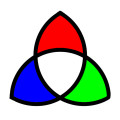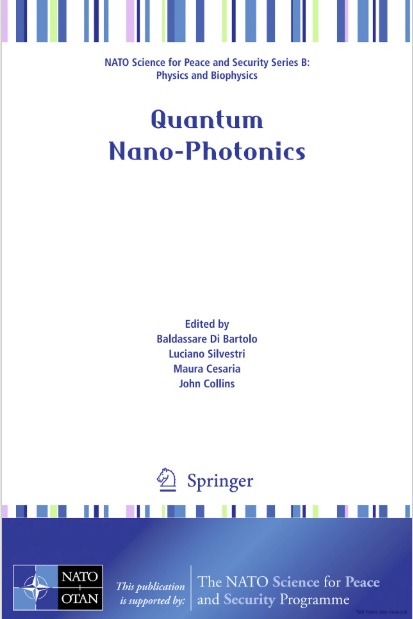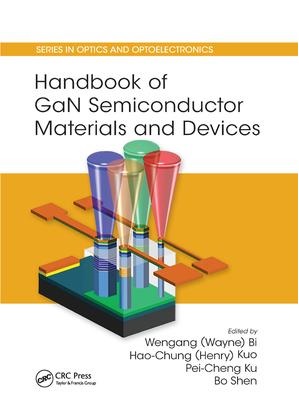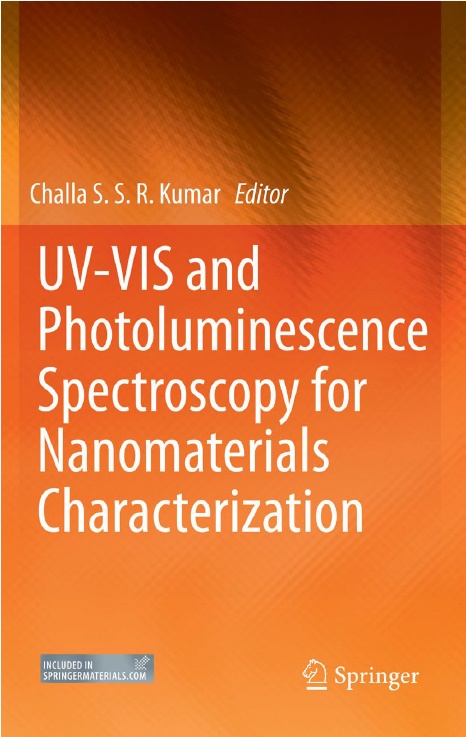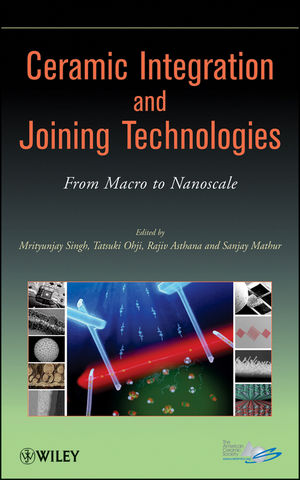Textbooks
 |
Applied NanophotonicsAuthors: Sergey V. Gaponenko and Hilmi Volkan Demir [Highlighted in Nature Photonics | VOL 13 | JANUARY 2019 | 5] With full color throughout, this unique text provides an accessible yet rigorous introduction to the basic principles, technology, and applications of nanophotonics. It explains key physical concepts such as quantum confinement in semiconductors, light confinement in metal and dielectric nanostructures, and wave coupling in nanostructures, and describes how they can be applied in lighting sources, lasers, photonic circuitry, and photovoltaic systems. Readers will gain an intuitive insight into the commercial implementation of nanophotonic components, in both current and potential future devices, as well as challenges facing the field. The fundamentals of semiconductor optics, optical material properties, and light propagation are included, and new and emerging fields such as colloidal photonics, Si-based photonics, nanoplasmonics, and bioinspired photonics are all discussed. This is the 'go-to' guide for graduate students and researchers in electrical engineering who are interested in nanophotonics, and students taking nanophotonics courses. Publisher: Cambridge University Press, Online ISBN: 978-131-653-586-8, Subjects: Physics And Astronomy, Engineering, Electronic, Optoelectronic Devices, and Nanotechnology, Optics, Optoelectronics and Photonics, ©2018 |
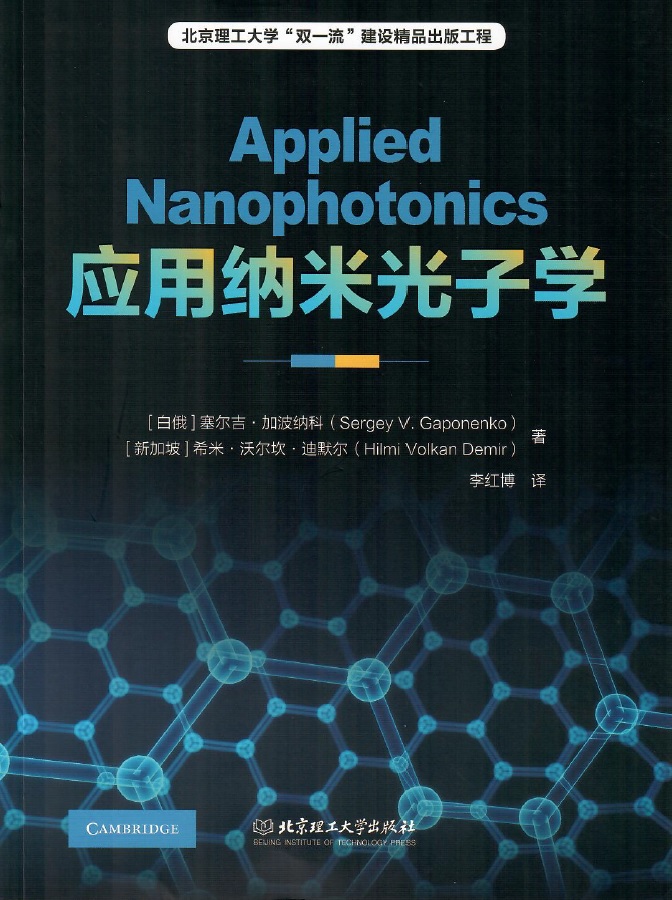 |
Briefs
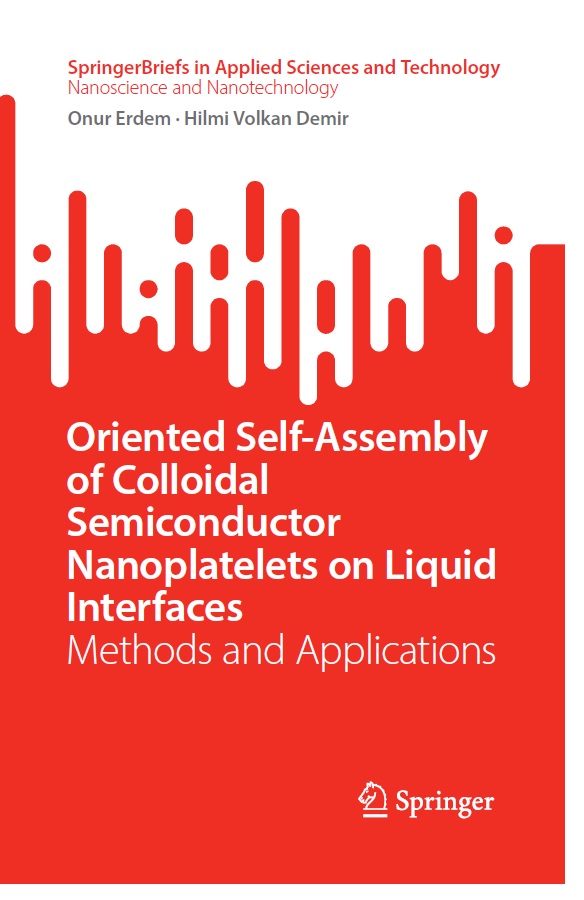 |
Oriented Self-Assembly of Colloidal Semiconductor Nanoplatelets on Liquid InterfacesSeries: SpringerBriefs in Applied Sciences and Technology Authors: Onur Erdem and Hilmi Volkan Demir This book highlights the fabrication of orientation-controlled colloidal quantum well (nanoplatelet) thin films using liquid interface self-assembly. The book details methods for orientation-controlled deposition of CdSe core nanoplatelets for characterization of directional energy transfer in nanoplatelets and layer-by-layer construction of CdSe/CdZnS core/shell nanoplatelets to create optically active waveguides with precisely tunable thickness and excellent uniformity across device scale. It also provides a future outlook for construction of large-scale two- and three-dimensional nanoplatelet superstructures and their incorporation into device fabrication. Publisher: Springer, Singapore Online ISBN: 978-981-19-7051-1, Series Print ISSN: 2191-530X, Series Online ISSN: 2191-5318, DOI: 10.1007/978-981-19-7052-8 |
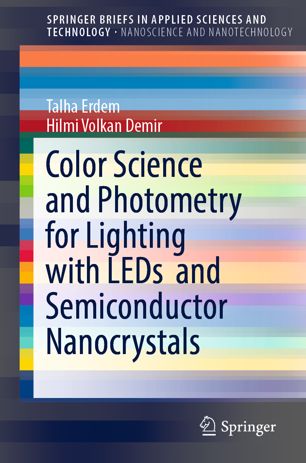 |
Color Science and Photometry for Lighting with LEDs and Semiconductor NanocrystalsSeries: Springer Briefs in Applied Sciences and Technology Subseries: Nanoscience and Nanotechnology Authors: Talha Erdem and Hilmi Volkan Demir [Highlighted in Nature Photonics | VOL 13 | APRIL 2019 | 223] This book reviews the application of semiconductor nanocrystals also known as colloidal quantum dots (QDs) to LED lighting for indoors and outdoors as well as LED backlighting in displays, summarizing the color science of QDs for lighting and displays and presenting recent developments in QD-integrated LEDs and display research. By employing QDs in color-conversion LEDs, it is possible to simultaneously accomplish successful color rendition of the illuminated objects and a good spectral overlap between the emission spectrum of the light source and the sensitivity of the human eye at a warm white color temperature – something that is fundamentally challenging to achieve with conventional sources, such as incandescent and fluorescent lamps, and phosphor-based LEDs. Publisher: Springer, Singapore Online ISBN: 978-981-13-5886-9, Print ISBN: 978-981-13-5885-2, Series Print ISSN: 2191-530X, Series Online ISSN: 2191-5318, DOI: 10.1007/978-981-13-5886-9 |
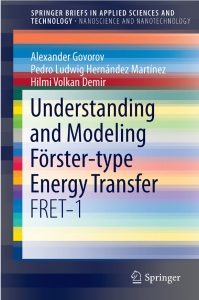 |
Understanding and Modeling Förster-type Energy TransferFRET-1 Series: Springer Briefs in Applied Sciences and Technology This Brief presents a historical overview of the Förster-type nonradiative energy transfer and a compilation of important progress in FRET research, starting from Förster until today, along with a summary of the current state-of-the-art. Here the objective is to provide the reader with a complete account of important milestones in FRET studies and FRET applications as well as a picture of the current status. Publisher: Springer Singapore, DOI: 10.1007/978-981-287-378-1, eBook ISBN: 978-981-287-378-1, Softcover ISBN: 978-981-287-377-4, Series ISSN: 2196-1670, ©2016 |
 |
Understanding and Modeling Förster-type Energy TransferFRET from Single Donor to Single Acceptor and Assemblies of Acceptors, Vol. 2 Series: Springer Briefs in Applied Sciences and Technology This Brief presents a complete study of the generalized theory of Förster-type energy transfer in nanostructures with mixed dimensionality. Here the aim is to obtain a generalized theory of FRET including a comprehensive set of analytical equations for all combinations and configurations of nanostructures and deriving generic expressions for the dimensionality involved. In this brief, the modification of FRET mechanism with respect to the nanostructure serving as the donor vs. the acceptor will be included, focusing on the rate’s distance dependency and the role of the effective dielectric function in FRET, which will be a unique, useful source for those who study and model FRET. Publisher: Springer Singapore, DOI: 10.1007/978-981-10-1873-2, eBook ISBN: 978-981-10-1873-2, Softcover ISBN: 978-981-10-1871-8, Series ISSN: 2196-1670, ©2017 |
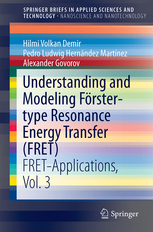 |
Understanding and Modeling Förster-type Energy TransferFRET-Applications, Vol. 3 Series: Springer Briefs in Applied Sciences and Technology This Brief will focus on the functional uses and applications of FRET, starting with the derivation of FRET in the assemblies of nanostructures and subsequently giving application cases for biologists, physicists, chemists, material scientists, engineers, and those in many other fields whoever would like to FRET as a tool. The goal of this part is therefore to show both specialist and non-specialist how to use and analyze FRET in a wide range of applications. Publisher: Springer Singapore, DOI: 10.1007/978-981-10-1876-3, eBook ISBN: 978-981-10-1876-3, Softcover ISBN: 978-981-10-1874-9, Series ISSN: 2196-1670, ©2017 |
